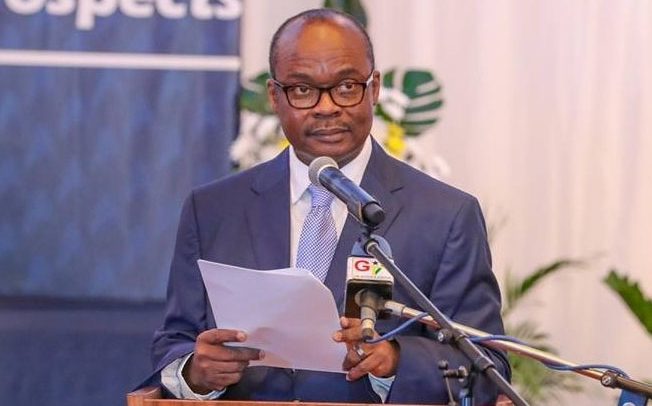Governor of the Bank of Ghana (BoG) Dr. Ernest Addison has indicated that the monetary authority will not relent in its battle to beat down inflation and attain price stability, despite global and local pressures militating against its efforts.
In a speech read on his behalf at the 39th Annual General Meeting (AGM) of the Ghana Bankers’ Association (GAB) by the Head of Banking Supervision at the central bank, Osei Gyasi, the Governor suggested that further rate hikes are within the realm of possibility, albeit without hinting at an imminent raise.
“With continued pressures and heightened inflation expectations… considering that inflation remains significantly above the medium target band and upside risks to inflation remain elevated, the bank will stay committed to the tight monetary policy stance to attain its price stability mandate,” he remarked.
The central bank’s posture appears similar to that of its peers across the globe, including US Federal Reserve Chairman Jerome Powell – who promised to keep at the fight and warned stakeholders of ‘pain’ in the pursuit of its inflation-reduction goal.
Stakeholders will have to wait a little longer to see what direction the BoG goes after it rescheduled its 108th regular Monetary Policy Committee (MPC) meeting to coincide with end of the IMF mission – so as to allow the decision on policy rate to benefit from the broader discussions to be held during the period, with a decision on the monetary policy stance to be announced on October 7, two weeks after the initial date of September 23.
Already, the monetary authority has raised its benchmark rate by 850 basis points (bps) since November 2021; and the Cash Reserve Requirement (CRR) is on course to reach a cumulative year-to-date hike of 700 bps, when measures announced by the BoG at the emergency sitting of the MPC in August are fully realised in November.
The BoG’s Inflation Targetting framework continues to come under scrutiny over its limitations in constraining the current spiking of inflation, which is driven more by supply-facing factors.
In its commentary ahead of the next MPC meeting, the Institute of Economic Affairs (IEA) reiterated this when it said: “We have repeatedly pointed out the inadequacy of the Inflation Targetting framework in dealing with these supply and cost drivers of inflation, especially at the primary level”.
The IEA however acknowledged the framework’s role in stemming potential second-round inflation, while reiterating calls for policy interventions that directly target the supply and cost factors.
Industry focus
In spite of the resilience exhibited by banks over the last few fiscal year, Dr. Addison said, recent developments in the macroeconomy pose some upside risks to the wider financial sector – and banks in particular.
He thus enjoined them to employ strong risk management systems to ensure the stability of their respective institutions and also the entire banking industry.
In June 2022 the major financial soundness indicators (FSIs) for the banking sector were still strong, with measures for maintaining solvency, liquidity and profitability all remaining above regulatory thresholds and generally improving from the same time last year.
The industry’s Non-Performing Loans (NPL) ratio also improved as a result of a slowing in the accumulation of NPLs and a pick-up in credit growth. However, the rising stock of NPLs shows that industry-wide asset quality problems still exist.
The banking sector’s total assets increased by 22.8 percent to GH¢200billion at end of June 2022 – higher than the growth of 17.2 percent recorded in the previous year.
At the end of the same period, the banking sector’s asset structure was still skewed toward less hazardous assets; as investments, cash, and bank balances made up 63.9 percent of total assets, down from 67.2 percent in June 2021.
This was due, in part, to the increase in Cash Reserve Ratio (CRR) requirement from 8 to 12 percent in March 2022: the share of cash and bank balances increased from 20.7 to 23.4 percent during the review period.
On the other hand, although investments continued to dominate the asset mix, their proportion in the asset-mix fell from 46.5 percent to 40.5 percent over the same comparison period.










